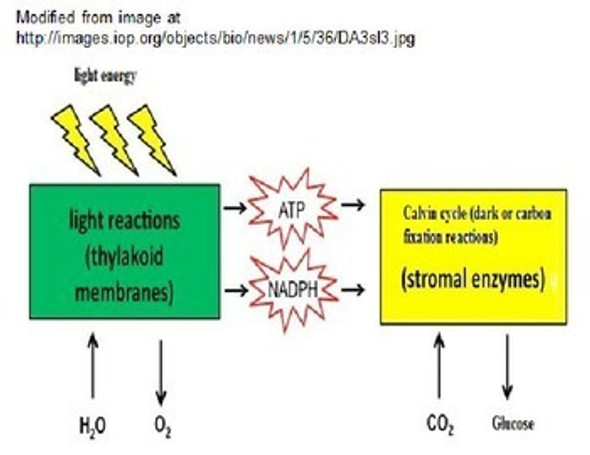Basic Science Review Learning Activities for Chemistry (Distance Learning)
- Bulk Pricing:
- Buy in bulk and save
- Contributor:
- Monday's Rescue
- Grade Level:
- 9-12
- Product Type:
- Learning Package (Notes, PowerPoint, Lab, Homework)
- File Type:
- doc, pdf, ppt
- Pages:
- 24
- Answer Key:
- Included with all but the lab
Description
his zip file contains many different activities (25 pages of student handouts and PowerPoints with a total of 109 slides) which can be used to compose a unit for chemistry students introducing and reviewing some basic science skills required for chemistry. While these lessons were originally designed to correlate to the performance indicators of the New York State Chemistry - Physical Setting curriculum, the components of this lesson may be easily used in other chemistry or physical science courses as well. If your course uses a reference table, please feel free any table which best suits your students.
Some of the topics addressed in this learning packet include basic SI units, metric prefixes and conversions, scientific notation, significant figures and calculations involving significant figures, density, percentage of error and mathematical relationships involving graphing.
Many documents are included in both word docx as well as pdf format to allow editing for specific teacher needs.
The specific contents of the learning package includes the following items (the page count for these items are actual student handouts as answer key page counts are not included):
-- Marzano self assessment scale including learning goals for students specific to this unit
-- Cloze notes handout for students with learning goals and Common Core Standards (8 pages)
-- 60 slide PowerPoint to accompany the cloze notes
-- Sugar Density Column Lab (1 page)
-- Scientific Notation and Metric Conversions Worksheet (1 page) with 23 slide answer key in PowerPoint format
-- Significant Figures Worksheet with answer key (18 questions) (3 pages)
-- Density and Percentage of Error Worksheet with answer key (2 pages)
-- Basic Science Review Quiz with key (2 pages pdf only)
-- Basic Science Review Quiz # 2 with key (1 page pdf only)
-- Basic Science Review Exam for this Unit with key (15 mixed format questions) (4 pages)
-- Sugar Density Column Lab (1 page) (no key)
-- Basic Science Review Jeopardy Game (26 questions) (54 slides)
Learning Goals
Upon the completion of this unit the student will be able to:
1. recognize and convert various scales of measurement.
2. transform a number to scientific notation format when given a number in standard form.
3. show validity in measurement by the use of significant figures.
4. calculate the percent error.
5. determine the density from sample data.
6. demonstrate the ability to make unit conversions between different measurements.
7. identify how temperature and pressure and other changes influence the density of many substances.
8. distinguish between precision and accuracy.
9. identify the independent and dependent variables in an experiment and on a graph.
10. explain the difference between the following types of mathematical relationships as represented on graphs; direct proportion, Inverse proportion, direct squared proportion and indirect squared proportion.
STAAR Standards
Scientific Process Skills
C.2.F collect data and make measurements with accuracy and precision
C.2.G express and manipulate chemical quantities using scientific conventions and mathematical procedures, including dimensional analysis, scientific notation, and significant figures
C.2.H organize, analyze, evaluate, make inferences, and predict trends from data
Common Core State Standards Connections:
ELA/Literacy
RST.9-10.7 Translate quantitative or technical information expressed in words in a text into visual form (e.g., a table or chart) and translate information expressed visually or mathematically (e.g., in an equation) into words.
WHST.9-12.5 Develop and strengthen writing as needed by planning, revising, editing, rewriting, or trying a new approach, focusing on addressing what is most significant for a specific purpose and audience.
WHST.9-12.9 Draw evidence from informational texts to support analysis, reflection, and research.
Mathematics
MP.2 Reason abstractly and quantitatively.
MP.4 Model with mathematics.
HSN-Q.A.1 Use units as a way to understand problems and to guide the solution of multi-step problems; choose and interpret units consistently in formulas; choose and interpret the scale and the origin in graphs and data displays.
HSN-Q.A.3 Choose a level of accuracy appropriate to limitations on measurement when reporting quantities.
Terms of Use
Purchase of the product is for classroom use by the purchaser only. It is a violation for individuals, schools, and districts to redistribute, sell, or post this item on the Internet or to other individuals.
This work is licensed under a Creative Commons Attribution-NonCommercial-ShareAlike 4.0 International License.
View my complete High School Complete Chemistry Course














